It’s no secret that I love Literature Circles. Young children are capable of big conversations, and Literature Circles are a great way to tap into that! If you’ve been on the fence about trying them in your classroom, or maybe just want to know more about Literature Circles, this post is for you. (Also, if you’re already using Literature Circles and just want to be affirmed in your choices, keep reading!)
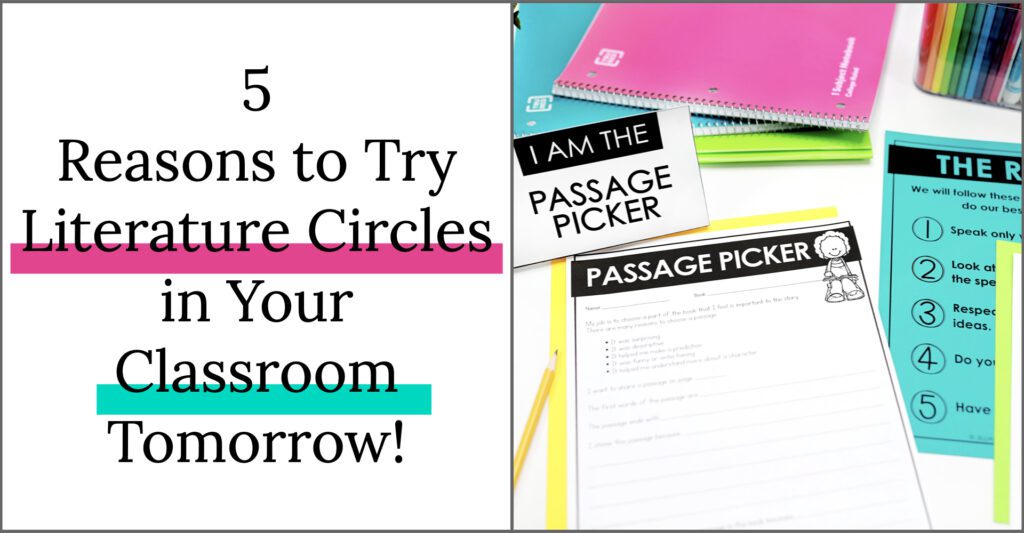
Literature Circles Encourage Independence
Literature Circles are essentially book clubs where students are assigned specific roles. These book clubs function independently, with limited support from the teacher.
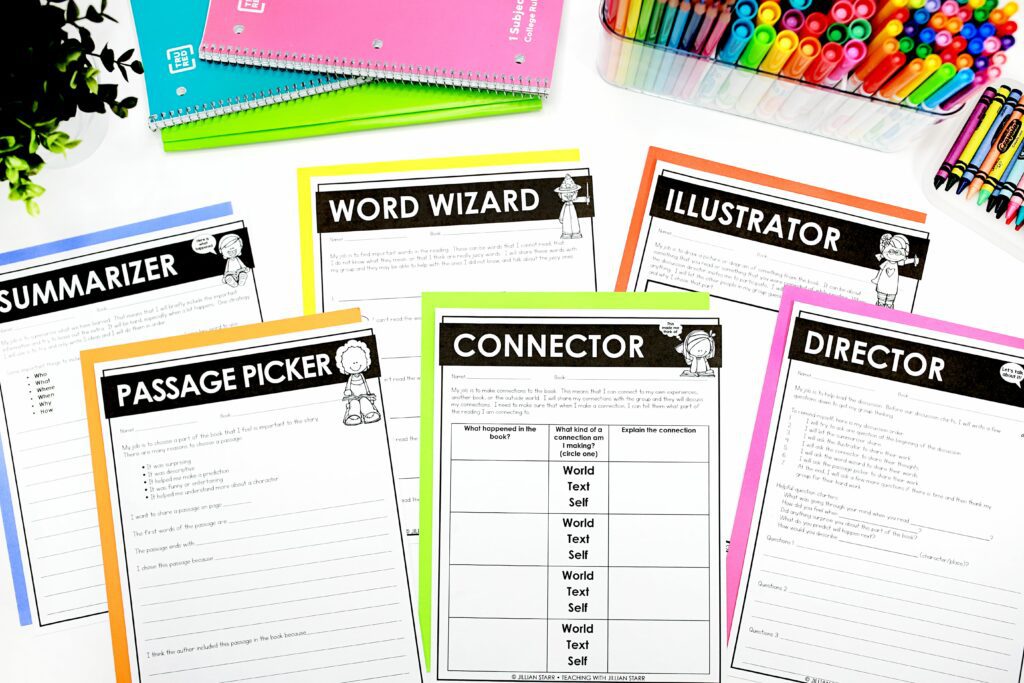
When we show students that we trust them enough to work together independently, their engagement increases dramatically. Once, I overheard a student whisper to their peer, “Ms. Starr is letting us do BIG kid work! This is SO cool!” You better believe they worked hard so they could do it again!
Bonus: When your students can engage in Literature Circles independently, we can then meet with our guided reading groups uninterrupted! Awesome, right?
Literature Circles Provide Structure
You might be saying, I don’t know if my students can work together independently yet. Well, the magic of Literature Circles doesn’t happen overnight. There is a specific way I introduce Literature Circles in my classroom, which I’ve actually outlined in a separate blog post. Once students have been introduced to the roles and expectations, it’s time to let them give it a try.
The beauty of literature circles is that it allows students to feel the independence I spoke of, but within a structure that helps them be successful. Each student understands their specific role and how it supports the group as a whole.
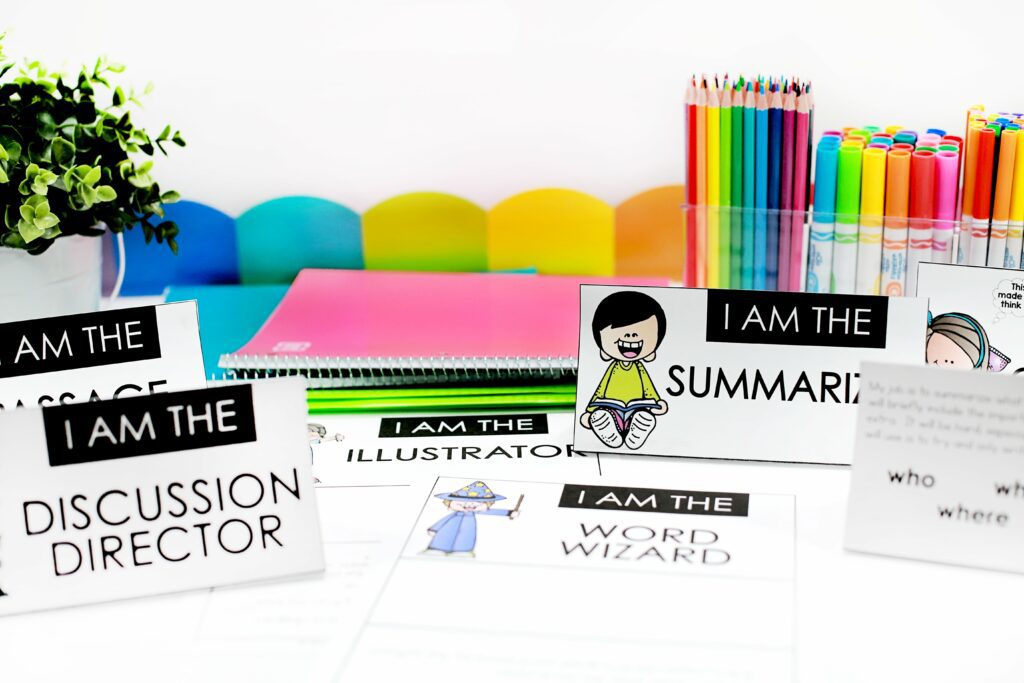
I embed an extra level of structure into my literature circles. I use table tents that show the role title on the front (the part that faces the rest of the group), and break down the responsibilities of the role on the back (where the student can clearly see the expectations). I also include a brief recap of their role on top of their recording pages. This way, they have multiple references to make sure they can fully participate in their group.
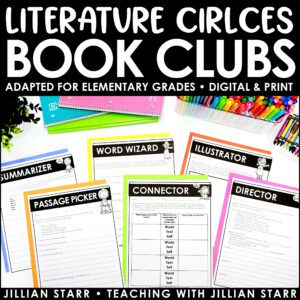
LIterature Circles
Literature Circles are Collaborative
The collaboration that takes place in Literature Circles was the selling point for me. I love watching students work together in a social setting to tackle their own learning.
The structure of Literature Circles helps balance the “air time” in group work as well. Our most social students understand when it is their turn to share their work, and the role of the director ensures that students take turns responding to one another. For our more reluctant speakers, Literature Circles provides an expected routine, where their participation is predictable and feels safer than in more open-ended, random group work.
Giving students the opportunity to discuss books, argue their points, and share their connections and experiences, sets them up for real life! As adults, we don’t read to fill out worksheets. We read for pleasure and then TALK about them with our friends. Literature Circles offer our students this same experience to enjoy reading and appreciate the social discussions books can create.
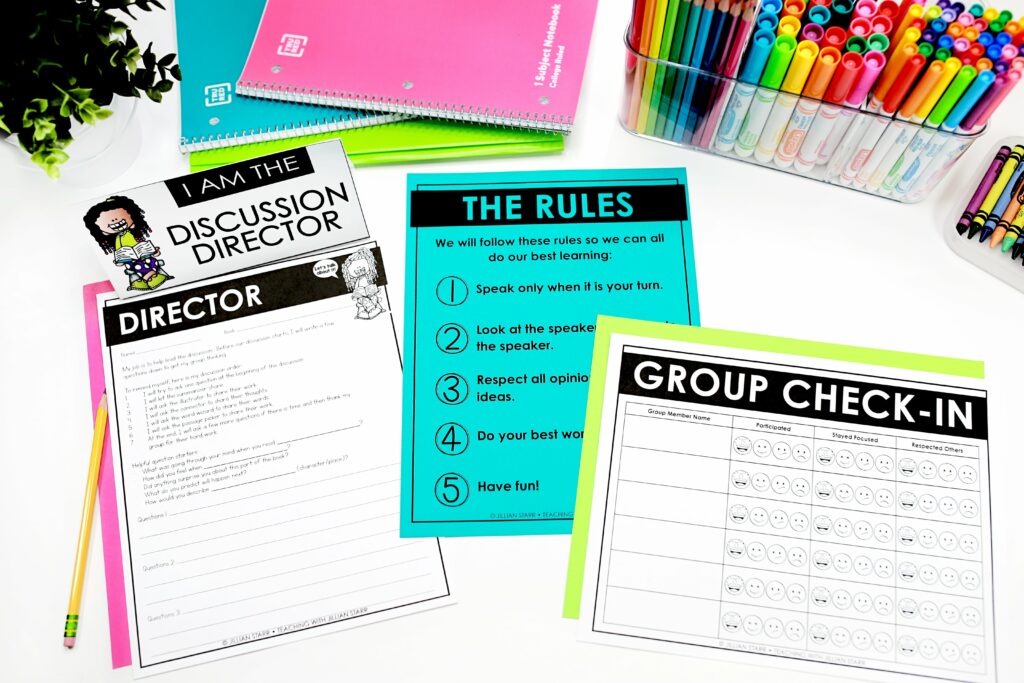

For some groups, I use an accountability reflection. These are kept private, but help give me a glimpse into how students are feeling about participation, effort, and the overall success of their group. If I notice any patterns, I will check in with the group or specific individuals to see if there are any further supports I can put in place or reminders I can offer to make the next round go smoothly.
Literature Circles Offer Choice
I love offering choice within our Literature Circles. I typically offer a few different texts. After giving a little teaser of each group, I have the students choose which book they would like to discuss. This simple choice creates greater buy-in, and increases engagement and participation.
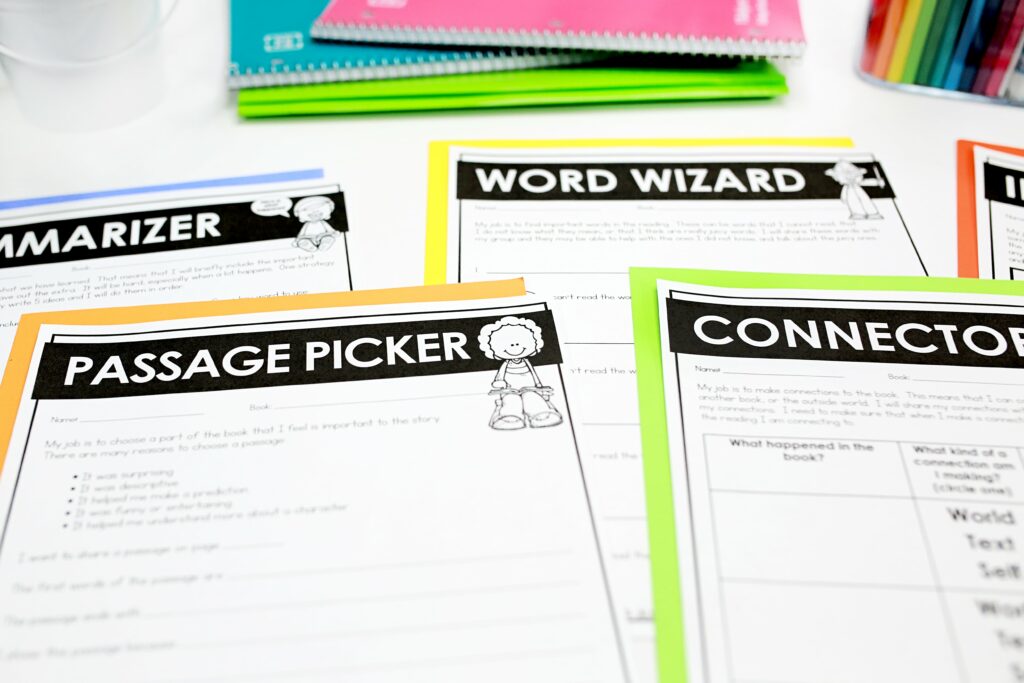

Another option, when you aren’t selecting books by topic rather than level or skill, is allowing students to form their own groups based on book choice. For example, if we are studying folktales, I might put out a few different folktales and allow students to gravitate towards the text that they find most appealing. Again, I find that this increases their engagement and overall success with Literature Circles.
Literature Circles are FUN!
Honest truth: I have never had a student who didn’t enjoy Literature Circles. The structure provides predictable routines and a safe environment for my students who might otherwise be reluctant participants. My more talkative students enjoy the opportunity to have social discussions with their peers. The element of choice creates a more enjoyable experience and allows them to take ownership over their learning. Finally, the independent aspect of Literature Circles is alluring and gives students a huge boost of confidence.
Overall, Literature Circles check all of the boxes and give students a FUN and successful way to engage with texts.


Are you ready to try Literature Circles in your classroom? If you’re looking to get started, you can check out this post to see how I introduce Literature Circles to my students. I hope it’s helpful and that you and your students enjoy it!




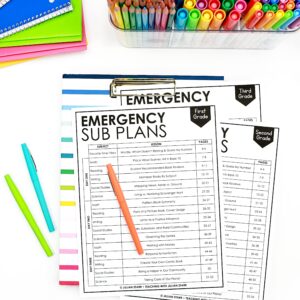

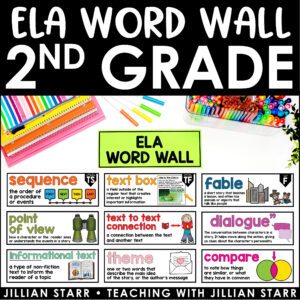
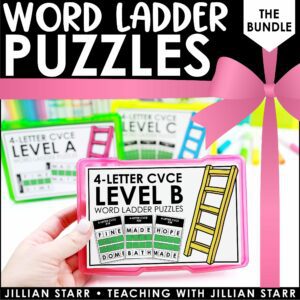
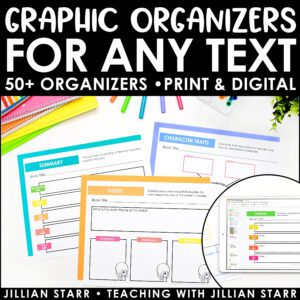
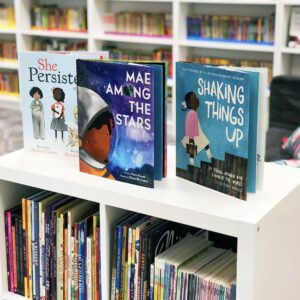

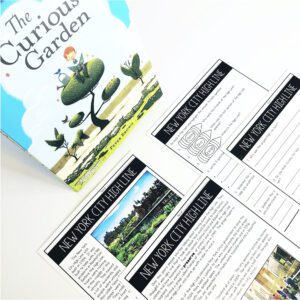


Leave a Comment